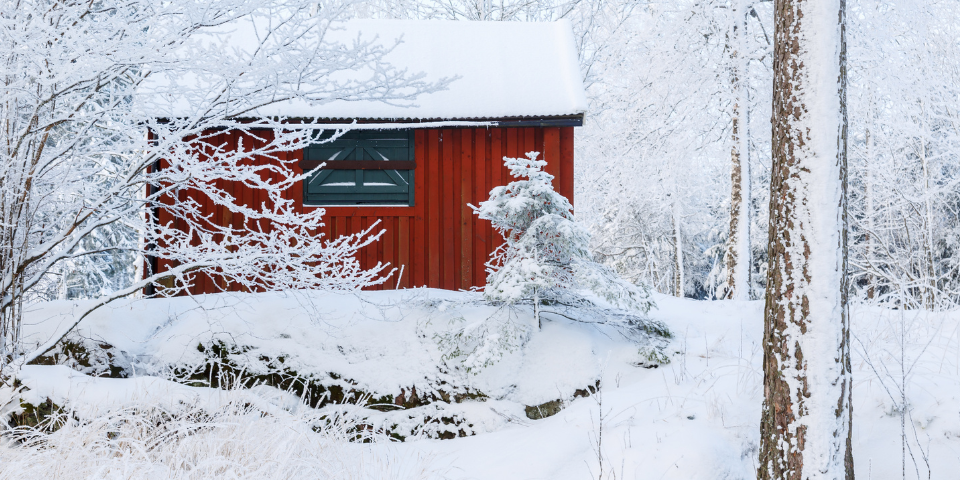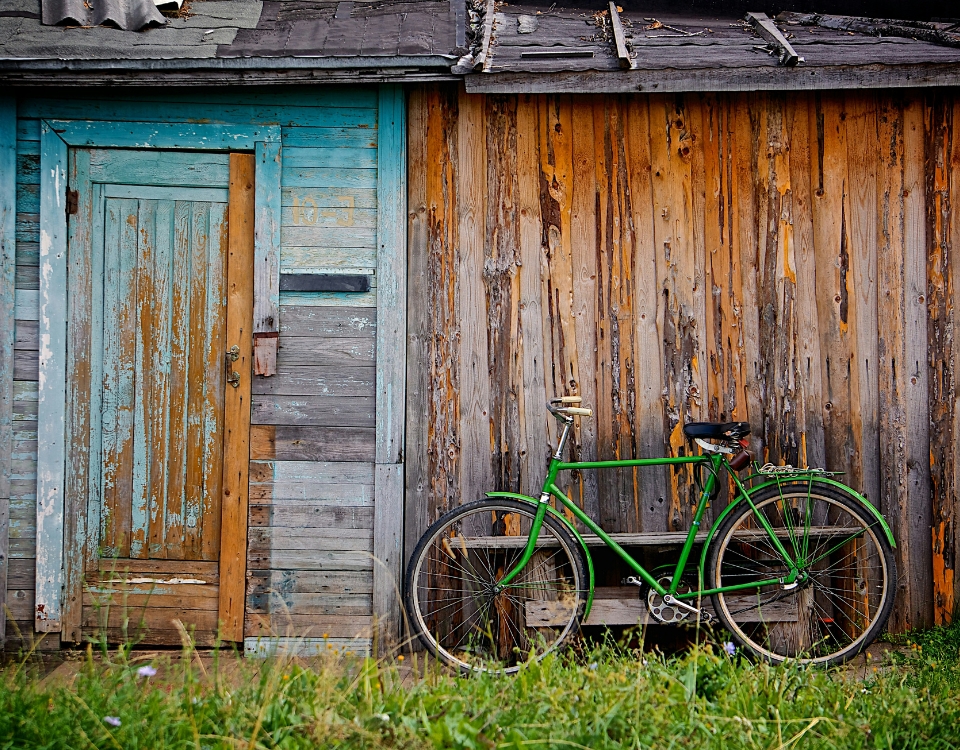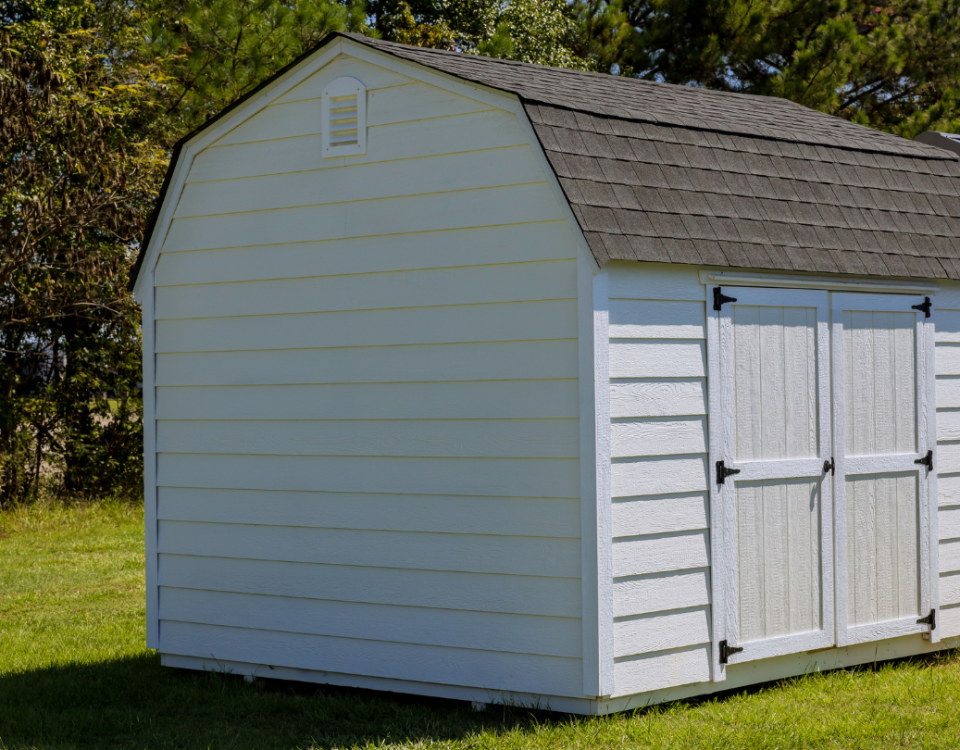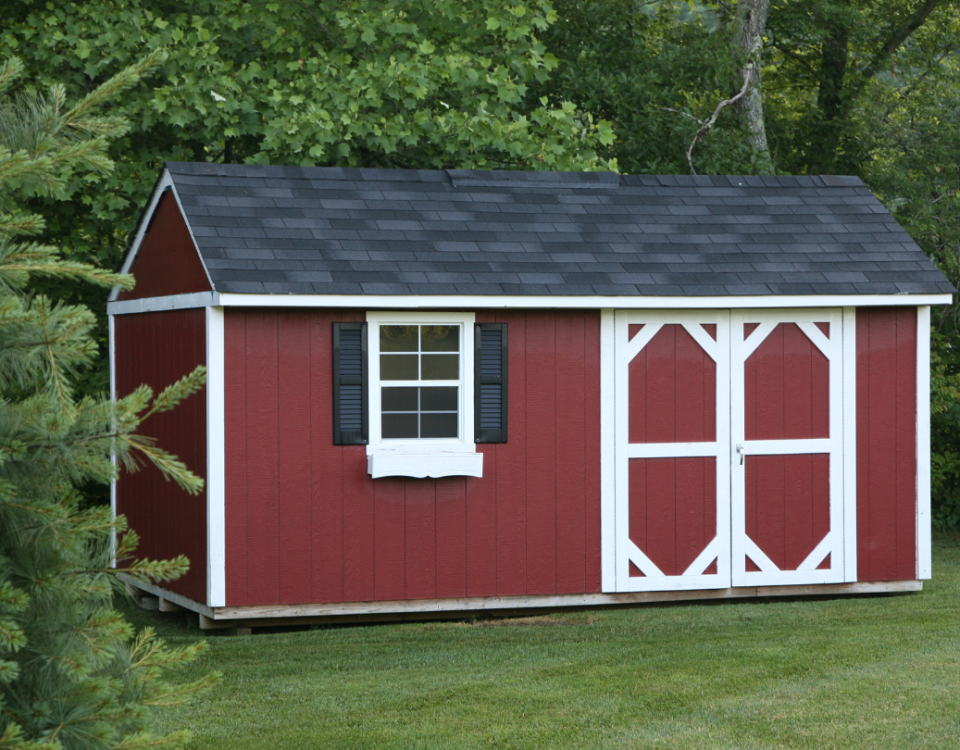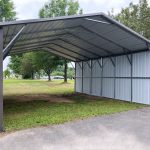
What Are The Different Types of Carports?
August 26, 2024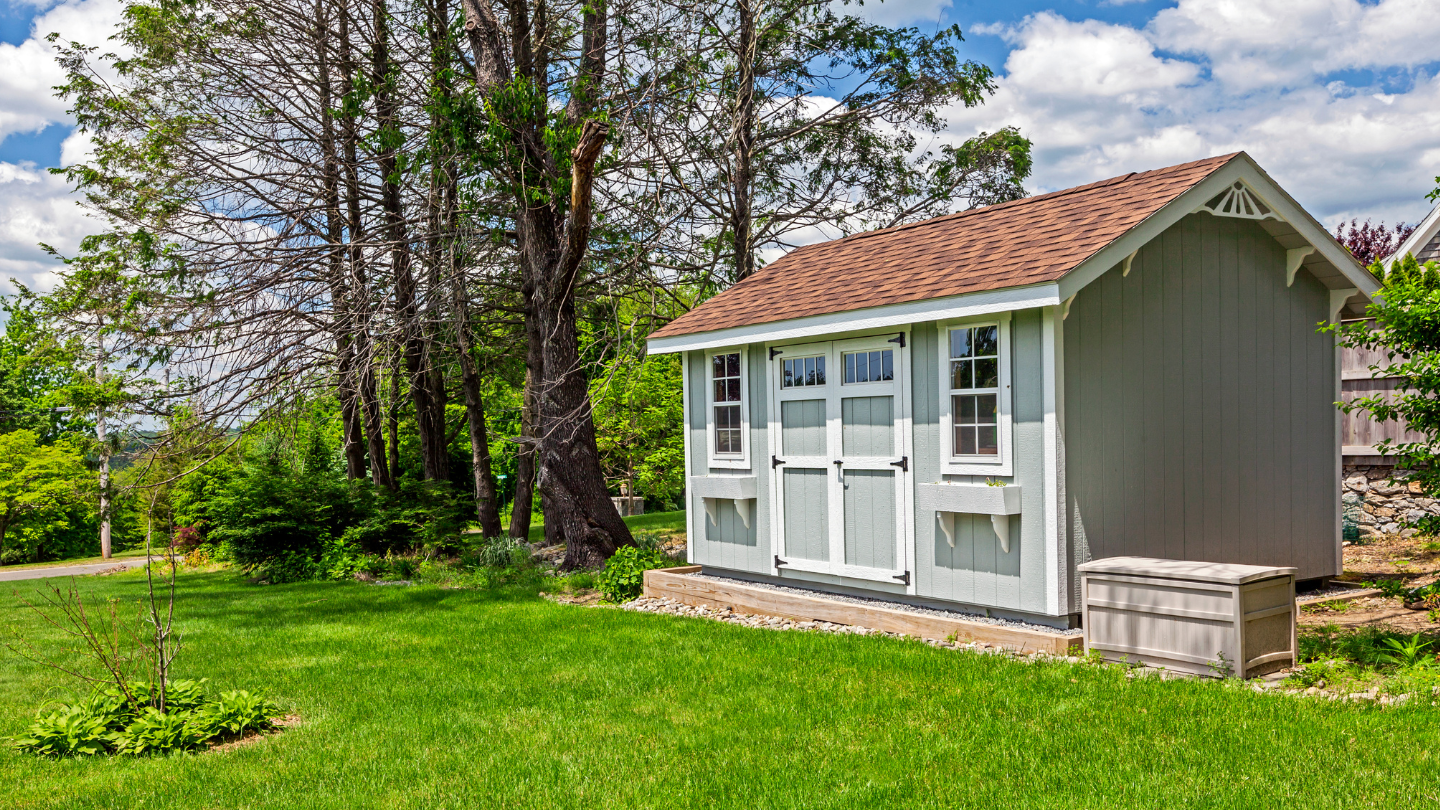
Prefab Sheds vs. Custom Sheds: Which is Best for You?
January 8, 2025Key Takeaways:
Winterizing a Shed:
Properly preparing your shed for cold weather is essential to prevent damage and ensure its functionality throughout the winter season.
Importance of Winterization:
Winterizing your shed protects its contents, extends its lifespan, and maintains its overall condition.
Steps to Winterize:
Effective winterization involves a thorough interior cleaning, assessing and repairing any damage, sealing cracks and gaps, adding insulation as needed, and implementing pest protection measures.
As the colder months draw near, it’s time to focus on how to winterize a shed to ensure it’s ready to withstand the challenges of winter. Properly preparing your shed is not just about safeguarding your garden tools and equipment; it also helps preserve the structure itself, preventing long-term damage from harsh weather.
Winterizing your shed involves key steps that can protect against moisture, freezing temperatures, and other seasonal hazards. In this guide, we’ll explain why winterizing is so important and offer a clear, step-by-step approach on how to winterize a shed to keep it secure, functional, and in top condition throughout the winter season.
How Do You Winterize a Shed?
Winterizing a shed involves preparing it to withstand the cold and challenges of winter, ensuring that both the structure and its contents remain secure and functional. Understanding how to winterize a shed means taking thoughtful steps to protect it from freezing temperatures, moisture, and potential damage. This process not only preserves the shed’s structural integrity but also keeps your tools and equipment in good condition.
You may improve the energy efficiency and comfort of the shed by concentrating on the necessary tasks like examining the roof, sealing doors and windows, and installing insulation. Whether you use your shed for a workshop, winter getaway, or storage, winterization makes sure it stays a dependable and hospitable place all through the colder months.
Importance of Winterizing a Shed
Understanding the importance of winterizing a shed can make a big difference in how well it performs during the cold months. When you know how to winterize a shed, you’re taking steps to protect it from the harsh effects of winter weather.
First off, winterizing helps keep your tools and equipment safe. Freezing temperatures and moisture can cause damage or rust, so preparing your shed properly ensures everything inside stays in good condition.
It’s also about preserving the shed itself. Without proper winterization, you risk damage to the structure—things like leaks, cracks, and even more serious issues. By sealing gaps and adding insulation, you help prevent these problems and extend the life of your shed.
Also, a well-prepared shed can be more energy-efficient! Proper insulation keeps the temperature more stable inside, which is especially useful if you use your shed as a workshop or a space for hobbies.
So, knowing how to winterize a shed isn’t just about making sure your shed survives the winter—it’s about keeping it in top shape for years to come and making it a comfortable space whenever you need it.
How to Prepare Your Shed for Winter
It’s all about taking a few practical steps to protect both the structure and what’s inside. This involves ensuring that the shed remains secure against the elements and maintaining a stable environment for your stored items. Let’s explore a few simple ways to prepare your shed for winter so it can withstand all the elements.
Step 1 – Clean and Declutter the Shed
Starting with a clean slate is quite crucial when preparing your shed for winter. Begin by removing all items from the shed to give yourself a clear view of the space. This allows you to thoroughly clean both the interior and exterior. Sweep out any dirt, leaves, and debris that may have accumulated. Check for cobwebs and wipe down surfaces to remove dust and grime.
Once the space is clean, take the opportunity to declutter. Evaluate each item and decide if it’s something you need to keep. This is a great time to sort through your tools and equipment, discarding anything that’s broken or no longer useful. Organizing your shed not only makes it easier to find what you need but also helps you spot any issues that might need attention before the colder weather sets in. A clean and clutter-free shed is the first step toward effective winter preparation, setting the stage for a well-maintained and functional space throughout the season.
Inspect for Any Damage or Leaks
Next up, it’s important to give your shed a thorough inspection to catch any damage or leaks before winter hits. Even small issues can turn into bigger problems if left unchecked. Start by checking the roof—look for any loose shingles or spots where you might see water getting in. These could lead to moisture problems that cause significant damage over time.
Don’t just focus on the obvious spots. Take a closer look at hidden areas where water might collect or seep in. Watch out for:
- Any signs of mold or mildew which could indicate moisture issues.
- Debris like leaves or branches that could block proper drainage.
- The condition of gutters and downspouts to ensure they’re directing water away from the shed.
Seal Any Cracks or Gaps
Sealing any cracks or gaps is a key part of knowing how to winterize your shed. This step helps keep out cold air, moisture, and pests. Start by checking the walls, windows, and doors for any visible openings. Even small gaps can let in cold air and moisture, which can lead to bigger issues over time.
Use a good sealant like caulk or weatherstripping to close these openings. Pay attention to areas around windows and doors where drafts are most likely. If you find cracks in the walls or foundation, filling them can prevent water from getting in and causing damage. Sealing these gaps helps keep your shed warmer and makes sure everything inside stays protected from the winter weather.
Add Insulation
Fall is a great time to tackle this task because the sunny, mild weather (of course somewhere in the gap of rainy days) makes it easier to work on your shed without dealing with the chill of winter.
You can use various insulation materials like fiberglass batts, foam boards, or spray foam to improve the warmth inside. Adding insulation to the walls and roof helps maintain a stable temperature, which is especially useful if you use the shed for hobbies or as a workshop.
With the weather still pleasant, it’s the ideal moment to install insulation. This way, by the time winter arrives, your shed will be ready to keep everything inside cozy and protected from the cold. Note -Do Not put two layers of similar or even different types of insulation in your building at the same time as it can create moisture and mold issues.
Protect Against Pests
As temperatures drop, many animals look for a warm place to nest, and your shed can be an inviting spot if it’s not properly secured.
Start by checking for any gaps, cracks, or holes in the walls, floor, and roof. These openings can be entry points for pests like rodents, insects, and even birds. Seal these openings with appropriate materials such as steel wool, caulking, or hardware cloth to keep unwanted visitors out.
Also, clear away any clutter or debris around the shed, as these can provide hiding spots for pests. Consider using pest deterrents like traps or natural repellents to further discourage animals from making your shed their winter home.
What Should Be Stored in a Winterized Shed
When you’re figuring out how to winterize a shed, it’s just as important to think about what you should store inside once it’s all set up. A well-winterized shed can be a great place to keep your gear safe and sound throughout the colder months. But what exactly should you store in a shed that’s ready for winter?
By carefully choosing what to store and making sure it’s properly protected, you’ll make the most of your winterized shed and ensure everything inside stays in great shape until spring arrives.
Seasonal Tools and Equipment
Start by bringing in any tools and equipment you won’t be using until the weather warms up. This includes things like lawnmowers, hedge trimmers, and garden hoes. Storing these items in a winterized shed helps prevent rust and damage from moisture and cold temperatures.
Before storing, make sure to remove dirt and debris to prevent rust and degradation. Keep in mind that hanging tools using hooks for pegboards can save floor space and make it easier to locate items.
Winter Supplies
Think about items you’ll need for the colder months, like snow shovels, ice scrapers, and de-icing salt. These are essential for managing snow and ice around your home, so keeping them in your shed ensures they’re ready for use whenever you need them.
Also, if you have any seasonal decorations or holiday supplies, like lights and ornaments, storing them in a designated spot in your shed can keep them safe from the weather and easily accessible when the holiday season arrives.
Maintaining a Winterized Shed
Once you’ve gone through the process of winterizing your shed, it’s important to keep up with regular maintenance to ensure it remains in great shape throughout the season. Winter weather can be tough on outdoor structures, and without routine care, even a well-prepared shed can develop issues over time. By checking in on your shed periodically, you ensure that all your hard work in preparing it doesn’t go to waste and that it continues to provide a safe, dry space for your tools and equipment.
As the snow begins to pile up, keeping an eye on your shed – snow buildup on the roof can lead to issues like ice dams, which trap moisture and can cause leaks or even structural damage. Removing ice and snow regularly helps prevent these problems and ensures your shed continues to protect everything inside from the harsh elements. A little upkeep goes a long way in preserving your shed’s condition throughout the season.
When Should You Winterize Your Shed?
Fall is the perfect time to start winterizing your shed. As the weather cools but remains mild, it provides the ideal conditions for checking your shed and making any necessary repairs or improvements before winter sets in. During fall, you can take advantage of the dry, sunny days to seal any cracks, add insulation, and protect your shed from the harsher elements to come. Waiting until winter can make these tasks more challenging, as cold temperatures and snow make it difficult to work outside.
It’s advisable to monitor weather forecasts and observe nature’s signals too, such as the changing colors of leaves or the migration patterns of birds, which can serve as indicators for impending winter conditions.
Upgrade and Winterize Your Shed with Barnyard Utility Buildings in Charlotte, NC
Looking to give your shed a makeover or figure out how to winterize it? At Barnyard Utility Buildings we recommend seeking local licensed contractors to address this type of issue. Local contractors will have a deeper knowledge of your area and how certain insulating materials can benefit you more than others throughout the year at your location.
Frequently Asked Questions
What is the best way to winterize a shed?
The best way to winterize a shed is to start by cleaning out any debris and organizing the items inside. Next, seal any cracks or gaps with caulk or weather stripping. Finally, determine if you want to insulate the walls and roof, and what materials you plan to use to keep the cold air out.
Do I need to cover my shed for the winter?
It is recommended to cover your shed for the winter to protect it from harsh weather conditions and to ensure effective shed protection. However, make sure to use a breathable cover to prevent moisture build-up and mold growth.
How do I prevent pests from entering my shed during the winter?
To prevent pests from entering your shed, make sure to seal any cracks or gaps and also check for holes in the walls or floor, which can be a part of your home improvement strategy. You can also use pest repellents or traps inside the shed.
Can I use a space heater to keep my shed warm during the winter?
This is a personal choice based on your needs and any relevant safety concerns you might have.
What should I do with the items inside my shed during the winter?
If possible, remove any items from the shed and store them in a temperature-controlled area, particularly if you have valuable woodworking tools. If this is not feasible, make sure to cover them with a tarp or plastic to protect them from the cold and moisture.
Note, that we are not advising you to clean everything out of the shed for this purpose, but rather that you address any valuable equipment or tools that should be moved to a more protected location
Do I need to ventilate my shed during the winter?
Yes, it is important to have proper ventilation in your shed even during the winter to complement your efforts in implementing DIY insulation effectively. This will prevent moisture build-up and mold growth, which can damage the items inside and the structure of the shed.


